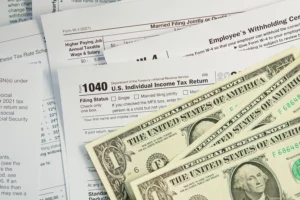 The Internal Revenue Service has (finally!) released the tax brackets for 2024, which are annually indexed for inflation. The top bracket is always the strangest; you would think that the filing joint returns threshold would be double the single filer threshold, as it is for the other brackets, but… Single taxpayers with adjusted gross income of $609,350 will be in the 37% bracket next year, while joint filers making $731,200 or more will fall into that top bracket.
The Internal Revenue Service has (finally!) released the tax brackets for 2024, which are annually indexed for inflation. The top bracket is always the strangest; you would think that the filing joint returns threshold would be double the single filer threshold, as it is for the other brackets, but… Single taxpayers with adjusted gross income of $609,350 will be in the 37% bracket next year, while joint filers making $731,200 or more will fall into that top bracket.
The 35% bracket will start at $243,725 for single filers next year; $487,450 joint; the 32% bracket will kick in at $191,950 (single) or $383,900 (joint); people will enter the 24% bracket starting at $100,525 (single) or $201,050 (joint); and the 22% bracket threshold will be crossed after $47,150 (single) or $94,300 (joint). The 12% bracket will start at $11,600 or $23,200, and anything below that falls into the 10% tax bracket.
The standard deduction will also go up fairly substantially, to $14,600 for single filers; $29,200 for join filers, with an additional $1,550 or $1,950 for married or unmarried seniors, respectively. People will pay no capital gains taxes on gains realized if their adjusted gross income is below $47,025 (single) or $94,050 (joint); above that, they would pay taxes on their capital gains at a 15% rate until they reach the 20% threshold at $518,900 (single) or $583,750 (joint.)